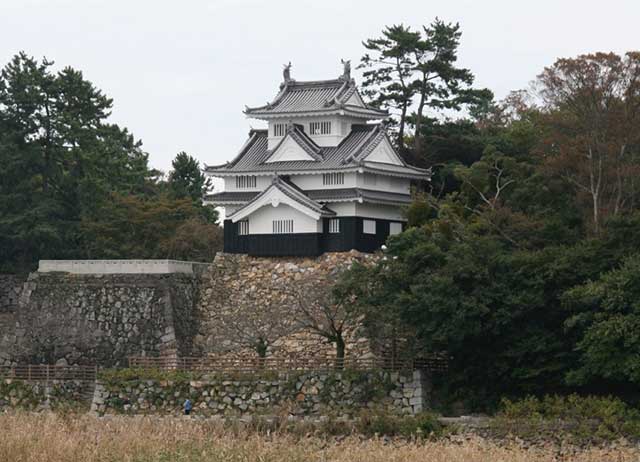
Yoshida Castle is renowned worldwide, particularly through the intricate woodblock prints by Edo Period artist Hiroshige. His famous series, depicting the 53 stages of the Tokaido—the historic route between Kyoto and Edo (modern-day Tokyo)—includes the 34th print, which shows workmen repairing a castle overlooking a wooden bridge crossing a wide river. This scene captures the Toyokawa River at Toyohashi in southeast Aichi Prefecture, and the castle is Yoshida Castle.
Constructed in 1505 on the western bank of the Toyokawa, Yoshida Castle was strategically placed to guard an important river crossing along the vital Tokaido highway. It was designed to protect the eastern Mikawa (now central Aichi Prefecture) lands of warlord Imagawa Ujichika from the encroachments of the Matsudaira Clan of western Mikawa Province. Utilizing the river as a natural defense, the castle’s main citadel, or Honmaru, was enclosed by a moat. Unlike many Japanese castles that feature a large multi-story tower donjon, Yoshida Castle boasted three three-story yagura (watchtowers), a single two-story yagura, and three large fortified gates. The second and third citadels were also encircled by moats and fortified with smaller yagura and robust gates.
Due to its strategic importance, Yoshida Castle was the site of numerous battles and sieges during the civil war period. One notable siege occurred in 1575, led by Takeda Katsuyori before the Battle of Nagashino. Despite being besieged by over 15,000 Takeda forces, the castle’s small garrison of 500 samurai held out, causing Katsuyori to abandon the siege and attack nearby Nagashino Castle instead. This delay allowed the allied forces of the Tokugawa and Oda clans to prepare for the decisive battle that led to the Takeda clan's downfall.
From 1600 onwards, under Tokugawa rule, Yoshida Castle remained a significant stronghold and a key sentinel over the Tokaido. Throughout the Edo Period, various daimyo oversaw the castle, many of whom expanded and fortified its structure. However, with the fall of the Shogunate in 1868 and the abolition of feudalism, Japan returned to imperial rule. The castle was peacefully surrendered to the new Meiji government but was destroyed by fire in 1873 after being handed over to the Imperial army.
After World War II, the castle site was transformed into a park. Toyohashi City Hall was constructed on part of the old castle grounds, beside the main citadel. In 1954, the three-story Kurogane Yagura, one of the original larger turrets, was rebuilt. The castle walls surrounding the inner bailey remain in good condition, giving visitors a sense of the castle's original size. However, many of the old moat systems have been filled in to make way for roadways. An art gallery and a sports complex now occupy the site of the second and third citadels. One of the best views of the castle is from the opposite (eastern) riverbank, where the reconstructed turret and riverside stone walls can be fully appreciated.
Despite its small size, Yoshida Castle played a significant role in Japan's turbulent history. Today, it stands as a picturesque reminder of the past, offering visitors a glimpse into its storied legacy.
See also
-
Marugame Castle
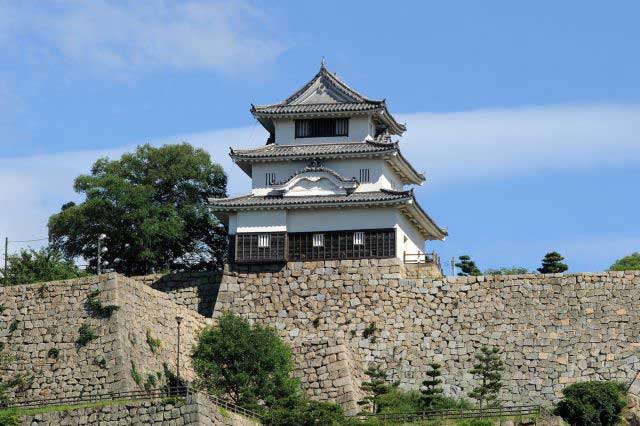
Marugame is part of the so-called “Authentic Dozen,” a group of twelve castles whose donjons have survived to the present day without major reconstructions since the Edo period.
-
Iyo Matsuyama Castle
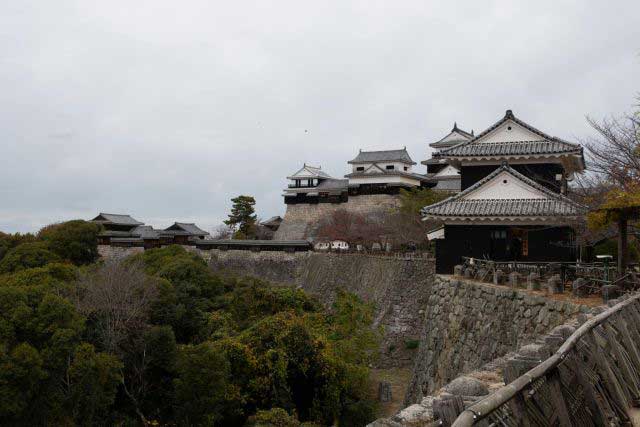
Historically, the center of Iyo Province—corresponding to today’s Ehime Prefecture on the island of Shikoku—was the city of Imabari, while the Matsuyama area was regarded as an agricultural hinterland with broad plains and low hills. During the Muromachi period, the central part of the province was governed by the Kano clan from Yuzuki Castle. With the onset of the Sengoku period, however, this clan lost its former influence and was forced to survive in the shadow of the more powerful Mori and Chōsokabe clans. After Toyotomi Hideyoshi’s forces conquered Shikoku in 1587, the northern part of Iyo Province was granted to Fukushima Masanori, one of the so-called “Seven Spears of Shizugatake.” In 1595, Masanori was transferred to Kiyosu Castle, and the lands around Matsuyama were given to another of the Seven Spears, Katō Yoshiaki, who received Masaki Castle and an income of 60,000 koku of rice.
-
Kanazawa Castle
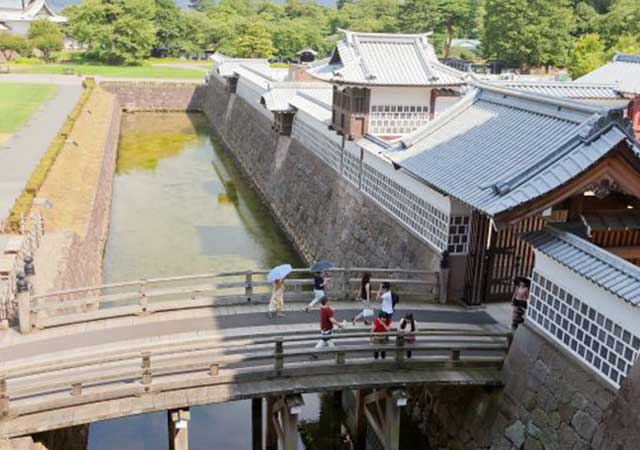
Construction of Kanazawa Castle began in 1580 on the orders of Sakuma Morimasa, a vassal of Oda Nobunaga. The castle was built on the site of the Ikko-ikki sect's Oyama Gobo temple, which is why it is sometimes called Oyama Castle. Morimasa managed to build several moats and begin construction of a castle town. However, after his defeat at the Battle of Shizugatake in 1583, he was executed, and ownership of the castle passed to Maeda Toshiie (1538–1599).
-
Nakatsu Castle
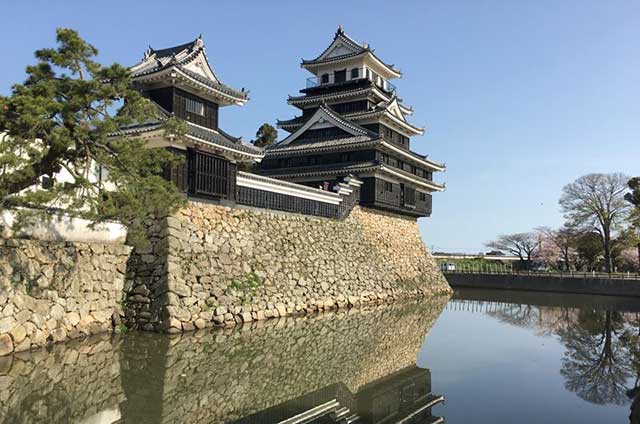
Kuroda Yoshitaka (1546–1604) was one of the closest advisors to the legendary military commander Toyotomi Hideyoshi. He took part in key military campaigns of the late 16th century, including the campaign against Shikoku in 1585 and the campaign against Kyushu in 1587. Later, during the second campaign in Korea, Yoshitaka served as chief advisor to the commander of the invasion forces, Kobayakawa Hideaki. After Hideyoshi's death, he swore allegiance to Tokugawa Ieyasu, thereby securing his influence and patronage under Japan's new leader.
-
Edo Castle
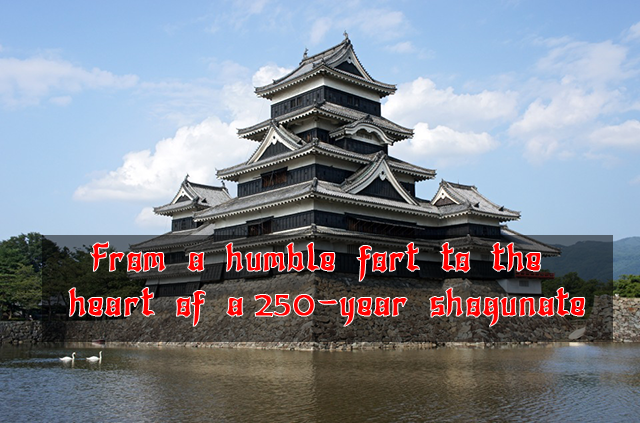
The history of Edo Castle dates back to the Heian period, when the Edo clan built a small fort on this site. In 1457, the vassal of the Uesugi clan, Ota Dokan (1432–1486), constructed a full-scale castle here. Internal conflicts weakened the Uesugi clan, and in 1524, Ota Dokan’s grandson, Ota Yasutaka, surrendered the castle without resistance to the forces of Hojo Soun, the ambitious leader of the Hojo clan. While Odawara Castle remained the clan's main stronghold, Edo was considered a key strategic fortress.
-
Samurai Museum Shinjuku
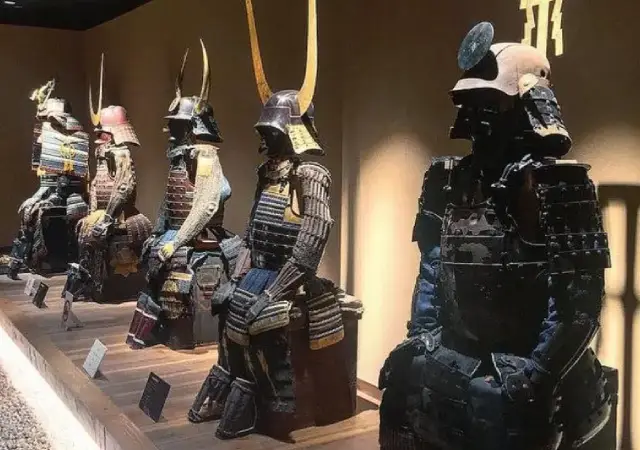
Situated in the vibrant district of Shinjuku, the museum showcases an extensive collection of samurai armor, weapons, and cultural artifacts spanning from the Kamakura to the Edo period. The exhibits aim to convey the samurai's unwavering commitment to honor and discipline, reflecting how their spirit continues to influence modern Japanese culture.
-
Anjo Castle
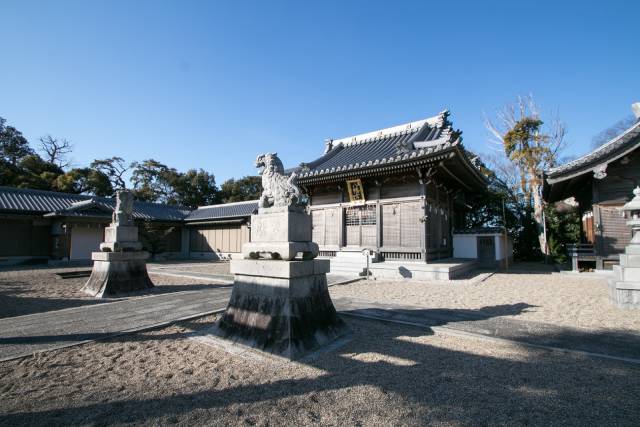
Anjo Castle was built on a slight elevation at the edge of the Hekikai Plateau, about 2 kilometers southeast of present-day central Anjo City in Aichi Prefecture. Today, the surrounding area thrives on large-scale agriculture and automotive manufacturing, utilizing the expansive flatlands and its proximity to the Nagoya region.
-
Numata Castle
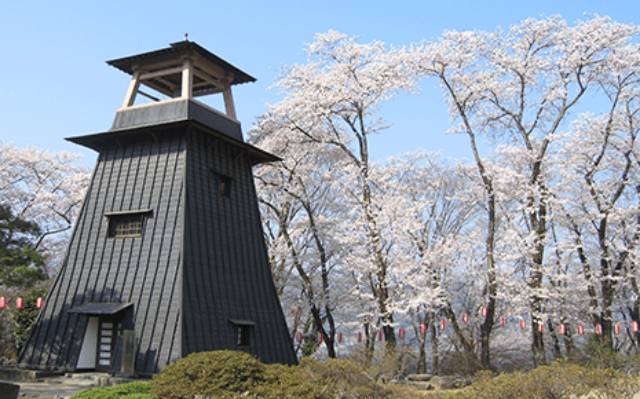
Numata Castle, located in Numata, northern Gunma Prefecture, Japan, has a rich and complex history. During the late Edo period, it served as the residence of the Toki clan, who ruled the Numata Domain. Over the centuries, the castle changed hands multiple times and was the site of significant battles during the Sengoku period.

